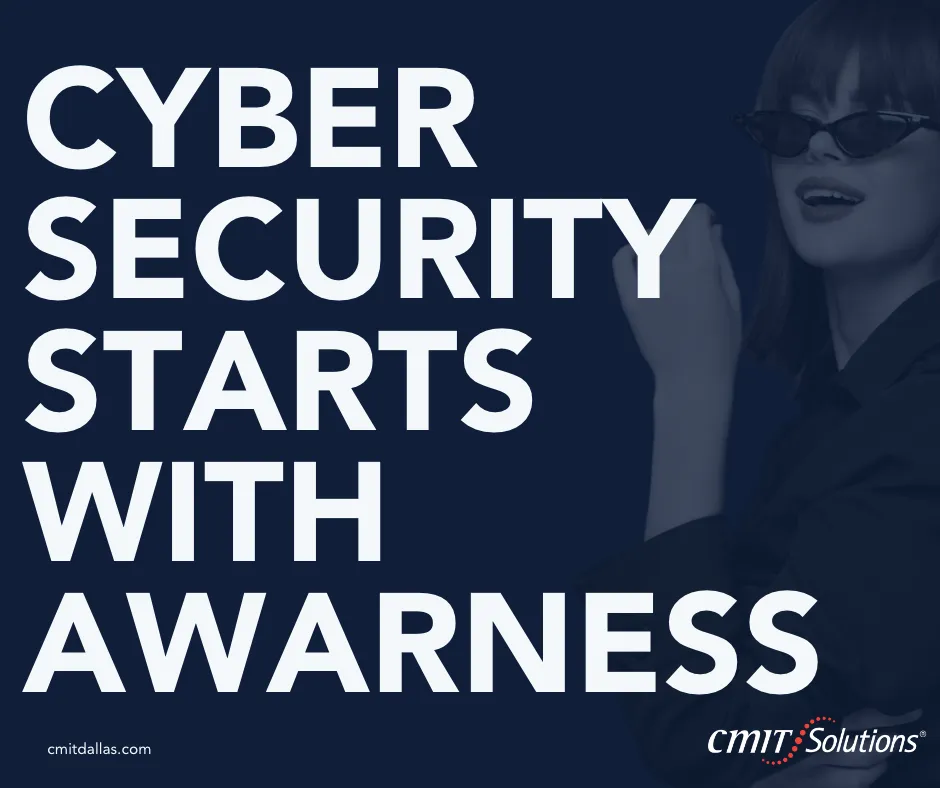See Our Latest Blogs
Stay updated with the latest trends and insights in Information Technology, cybersecurity, and digital transformation. Explore expert advice, practical tips, and innovative solutions to enhance your business efficiency and security on the CMIT Solutions blog

Practical Ransomware Solutions for SMBs
Imagine this: It’s Friday afternoon. You’ve got plans lined up for the weekend, and you’re ready to wrap up the week. Then suddenly, your screen freezes, your systems stop responding, and a message pops up.
“Your files have been encrypted. Pay $100,000 to get them back.”
This isn’t some scene from a sci-fi movie. This is ransomware—and it’s all too common for businesses today.
Ransomware isn’t just about locking up your data. It’s about stopping your entire business in its tracks. One minute your team is working as usual, and the next, they can’t access the critical files they need to get their jobs done.
And if you’re thinking, “We’re a small business, we’re not on anyone’s radar,” think again. SMBs are one of the biggest targets for ransomware because attackers assume smaller companies don’t have robust defenses in place. And they’re often right.
The Real Costs of Ransomware: It’s Not Just the Ransom
It’s tempting to think the biggest threat with ransomware is paying the ransom itself. But that’s just a piece of the puzzle.
In 2023, 40% of production data was encrypted in ransomware attacks. For SMBs, the financial damage was severe—$200,000 on average for recovery. That includes more than just the ransom payment. Downtime, lost productivity, and damage to reputation are the true costs that often go unnoticed.
Let’s break it down:
Downtime: When ransomware hits, your business doesn’t just lose data. You lose time. Systems can be down for days, even weeks. Every hour your data is locked away is an hour you’re not making money. For a small business, the impact of that kind of downtime can be catastrophic.
Lost productivity: Think about how much your team relies on digital tools and access to information. If your systems are locked up, your employees can’t do their jobs. No emails. No access to client files. No ability to process payments. The ripple effect of that lost productivity can be felt throughout your business, long after the attack is over.
Reputation damage: This one often gets overlooked, but it can be just as damaging as the financial costs. Clients trust you to keep their data safe. When an attack happens, that trust is shaken. Even if you manage to recover, rebuilding that trust can be a long and costly process. And in some cases, clients may decide not to stick around for it.
The 3 Key Steps to Ransomware Preparedness
So, what separates businesses that get devastated by ransomware from those that bounce back quickly? It’s all about preparation.
The truth is, you can’t stop every cyber attack from happening. But what you can do is minimize the impact by being prepared. And no, this doesn’t mean a total IT overhaul or investing in expensive security appliances. It’s about having smart, effective measures in place that ensure you can recover fast without breaking the bank.
Here’s how:
1. Backups Are Non-Negotiable
First thing’s first—if you don’t have reliable, automated backups, you’re playing with fire.
When ransomware strikes, having regular backups of your critical data is your best insurance policy. Why? Because if your files are locked up and you’ve got a solid backup, you can restore your data without paying a single cent to the attackers. It’s the simplest, most effective way to neutralize the threat of ransomware.
But here’s the catch: Not all backups are created equal. You need to make sure your backups are automated and frequent enough to capture the latest version of your data. It’s also important to ensure your backups are stored securely—off-network—so they can’t be encrypted by the ransomware too.
2. MFA: Your Secret Weapon
Multi-Factor Authentication (MFA) is one of the easiest and most effective tools in your cybersecurity arsenal. It’s not just about having strong passwords anymore (though those help). MFA adds an additional layer of protection by requiring two or more verification steps to access sensitive systems.
Even if a hacker gets their hands on a password—through phishing or brute force—MFA acts as a barrier, making it far harder for them to break into your systems. The added layer of security is essential for keeping ransomware out of your business in the first place.
The best part? Implementing MFA is easier than you think. Many of the tools you already use—email, cloud storage, and financial software—offer MFA as an option. It’s simply a matter of turning it on and making it a non-negotiable part of your security policy.
3. Employee Awareness Is Your Frontline Defense
Here’s something not everyone realizes: Ransomware doesn’t just waltz into your business on its own. It’s usually invited in—by an employee who unknowingly clicks on a phishing email or opens an infected attachment. Phishing remains the #1 entry point for ransomware.
That’s why employee awareness training is one of the most important steps you can take to protect your business. Your employees are on the front lines of your security. When they know what to look for—suspicious links, emails that don’t seem quite right—they can stop ransomware in its tracks before it even gets a chance to spread.
The key here is making training practical and ongoing. It’s not enough to have a one-off training session. Employees need to stay sharp because the tactics attackers use are always evolving. Regular updates and refresher courses keep everyone on alert and ensure your team knows how to respond to potential threats.
Resilience Over Perfection
Look, nobody’s expecting perfection. Cybersecurity is a constant game of staying one step ahead. But what separates businesses that survive ransomware attacks from those that crumble is simple: resilience.
If you’ve got backups, MFA, and a team that’s trained to spot phishing, you’re not just reacting to ransomware—you’re ready for it. You can recover quickly, protect your business, and keep moving forward without paying a ransom or losing days (or weeks) of productivity.
Are you ready to test how prepared your business is? A risk-free cybersecurity assessment can help you identify vulnerabilities and give you a roadmap to strengthen your defenses before an attack happens.
Because when ransomware comes knocking, it’s the businesses that are prepared that get to keep their doors open.
"CMIT has given me peace of mind in my business by providing me with ongoing protection, monitoring and an invaluable resource of providing technical help 24/7 if needed. They have assisted me with various technical needs in my business and I appreciate small businesses supporting other small businesses in our community."
Swiss Learning Center
"CMIT sent Leslie out to deal with my computer issue - which she handled so fast I can't remember now what it was! Leslie was patient, informative, and engaged me with confidence and relief. She did not talk down to me as if I didn't have a modicum of sense - electronically - but instead was in a teaching mode. I'm so glad to know I can call CMIT whenever I have a problem and allay my fear!"
Shari
"Every business NEEDS Carmen and Jaime with CMIT Solutions. They have taken my business to the next level and I am so grateful to have them on our team. It's like having our own personal IT department. We are more productive, more professional, and ready to worry about things other than IT. As a construction company - it is not in our wheelhouse to manage this side of the business and as a small business it's not super easy to know who to contact. They are affordable and knowledgeable and can easily take any business to where they envision. They come with my highest recommendation."
Ashley R.
Get In Touch
Email: [email protected]
Address
Office: 4514 Cole Ave # 600, Dallas, TX 75205
Assistance Hours
Mon – Fri 8:00am – 5:00pm
Sat-Sun – CLOSED
Phone Number:
NOT JUST IT. COMPLETELY MANAGED IT.
Complete IT solutions the moment you need them.
© 2025 CMIT Solutions of Dallas - All Rights Reserved,


